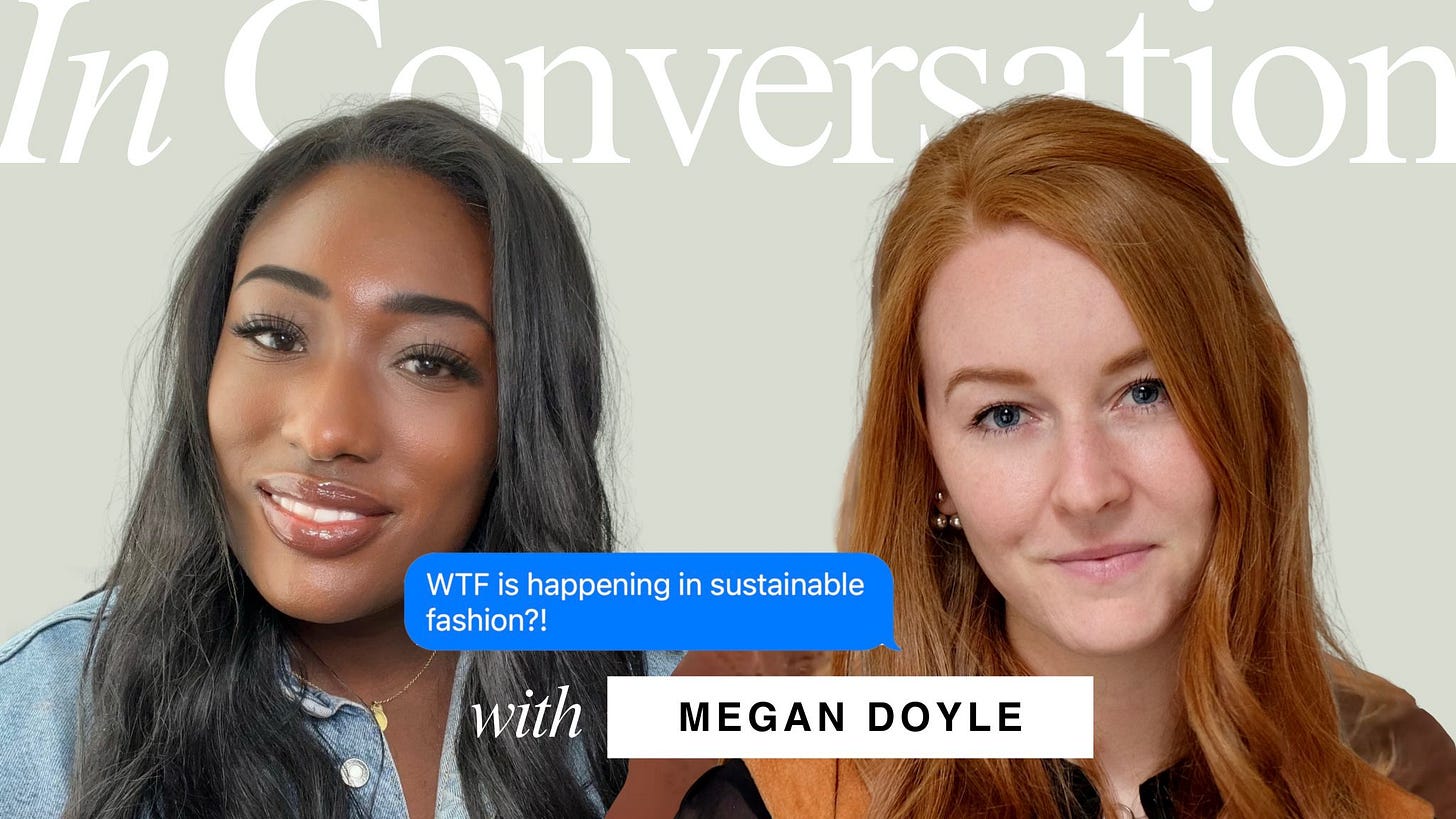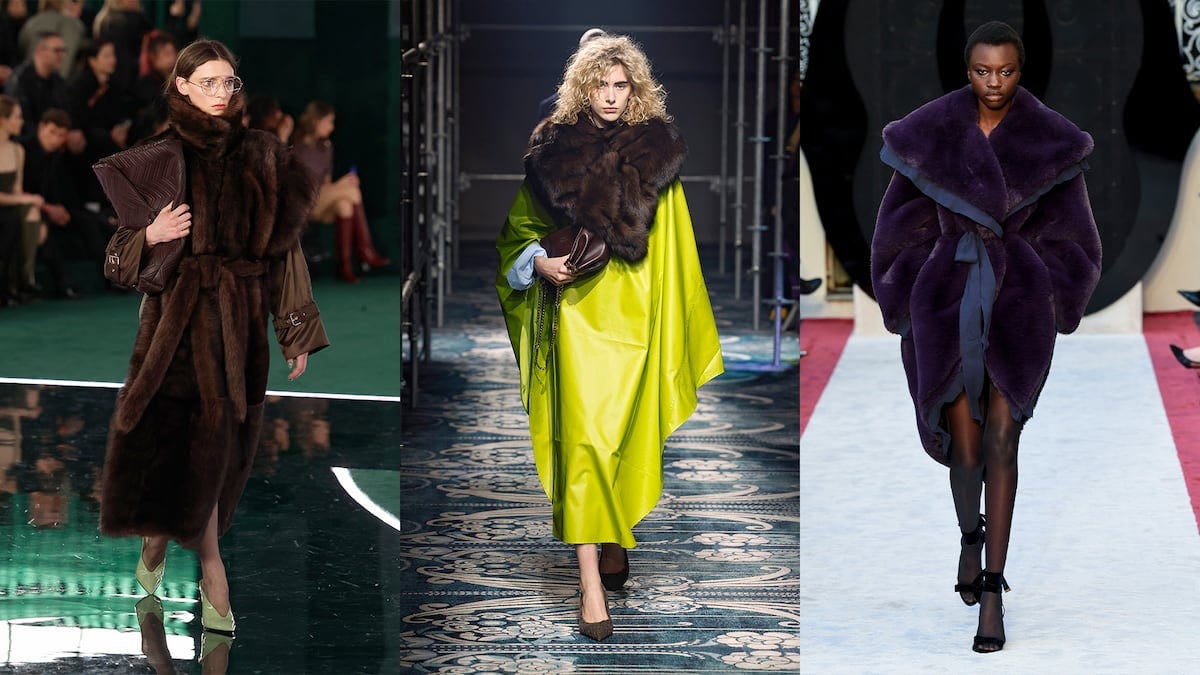March in Fashion, Condensed.
Fast fashion's reboot era, inside Gen Z's sustainability conundrum, a database of material innovation startups, and why is fur back on the runway?
Hello there,
Is there a place for Topshop in 2025? It’s a question I’ve been wondering since late March, when the brand shared a series of cryptic Instagram posts hinting a big revival is on the way.
In 2021, ASOS bought the early 2000s icon after (disgraced former owner) Philip Green’s Arcadia Group collapsed. While it never completely disappeared, Topshop has since been a shadow of its former Oxford street mega-store self since the buyout. It’s hardly surprising, given that the brand tugs at a deep sense of nostalgia for UK Millennials, that a reboot was on the cards.
But the fast fashion landscape is fundamentally unrecognisable to the industry of the 2010s, when Topshop reigned supreme in the UK. Things were bad then (we just didn’t know about it) but we could never have imagined the ways in which fashion would get faster, cheaper, and more problematic in the coming years. That’s not to mention the global supply chain, sociopolitical, world health and other cultural shit-storms that were on the horizon. Simpler times!
In the 2010s, ultra-fast fashion was not a thing. Trends were slower, more seasonal, and not hyper-charged by social media. Most shoppers wouldn’t conceive of a reality where they could buy a dress for less than £15, or that they could scroll through thousands and thousands of options on their phones then get items shipped free in a matter of days.
Production quality was still relatively high — I bought a pair of boots from Topshop in 2017 that I’ve had resoled a few times and still look great. I, as well as lots of friends, had H&M pieces for years that stood the test of time, something you probably can’t say for a lot of fast fashion these days.
That said, the murky business practices that gave rise to the H&Ms, Zaras and Topshops lay the foundations and set the standards for the current fashion industry and all its problematic norms. Large fashion brands are still trying to untangle the mess they made back then, with little measurable success.
Another fast fashion giant of the 2010s, Forever 21, announced its closure in March. It triggered a wave of eulogies that spoke to the brand’s cultural importance in the US, where it introduced fast fashion to young American shoppers.
I think we (Millennials) have to be careful not to let nostalgia cloud our judgement here. In isolation, one might assume these deaths and rebirths are positive — the fast fashion sector is long overdue a shakeup. Maybe Topshop has grown up and evolved with its customer base. Or maybe during its years in fashion exile, it just had a facelift with few improvements beneath the surface.
The market, both from a production, trade, and consumption perspective, is challenging to say the least. Will Topshop distance itself from ultra-fast fashion by offering higher quality, higher price point items in the contemporary category? More importantly, will the rebrand also include fair wages, stronger supplier relationships, and better working conditions for garment makers? Or more preferred fibres? What about producing smaller quantities? Or investing in circularity?
Fast fashion simply can’t compete with the scale and market domination of Shein and Temu — Forever 21 even cited them as contributing factors in its bankruptcy announcement. How will the new Topshop fare against the glut of polyester rubbish at rock bottom prices that shoppers have come to expect over the last few years?
I’m curious to hear your thoughts. Let me know what you think in the comment section!
On that note, see you next month.
Meg
Sustainable Fashion Forum Fireside Chat
In March I sat down with Brittany Sierra from Sustainable Fashion Forum on Substack Live — if you’re a paid subscribers of SFF you can watch it back at the link below! We discussed the rollback of EU legislation, the rapid transformation of the U.S under Trump, fashion lawsuits, and political tensions you could cut with a knife.
Things I Did Write
Big Brands Banned Fur. Why Is It Back on the Runway? for Business of Fashion
The luxury sector is turning to a roster of faux alternatives to tap into a resurgence in consumer appetite for fluffy fashions.
Why Fashion Should Think Carefully About Using Generative AI for Vogue Business
Generative AI could help fashion companies streamline their supply chains and save emissions, but the technology is energy intensive. Experts warn against jumping on the bandwagon.
Things I Didn’t Write
Nike’s Supply Chain Workers Continue to ‘Fight the Heist’ by Jasmin Malik Chua for Sourcing Journal
Circularity of the EU Textiles Value Chain in Numbers by the European Environmental Agency
India’s Native Cotton Was Stamped Out. Can It Be Revived? by Aditi Mayer for Vogue Business
Sustainable Style: How Fashion Can Reduce Tier 2 Emissions by Karl-Hendrik Magnus and Robert Westerdahl, with Julian Hügl, Laerke Wolf, and Nikolai Langguth for McKinsey
Why a Major Shift to US Clothing Production is Unlikely by Arriana McLymore and Helen Reid for Reuters
EU Slashes Sustainability Red Tape — At What Cost? by Sophie Benson for Vogue Business
Inside Gen Z’s Sustainability Conundrum by Prateeksha Prabhakar for Sourcing Journal
The Fall of Forever 21 Means Fast Fashion Got Faster by Amy Odell for the New York Times
The Glaring Problem With PrettyLittleThing’s Rebrand by Katie Rosseinsky for the Independent
The To-Do List
Labour Behind the Label and Oxfam have released this series of interviews with garment workers in Leicester, sharing the stories of the people impacted by fashion’s cut-and-run approach to supply chain scandals.
I came across this database of next-gen material innovators in fashion by Donatela Bellone, an ex-McKinsey sustainability consultant. It’s super comprehensive (almost 90 companies listed) so if you’re interested in the landscape, it’s worth a look.









